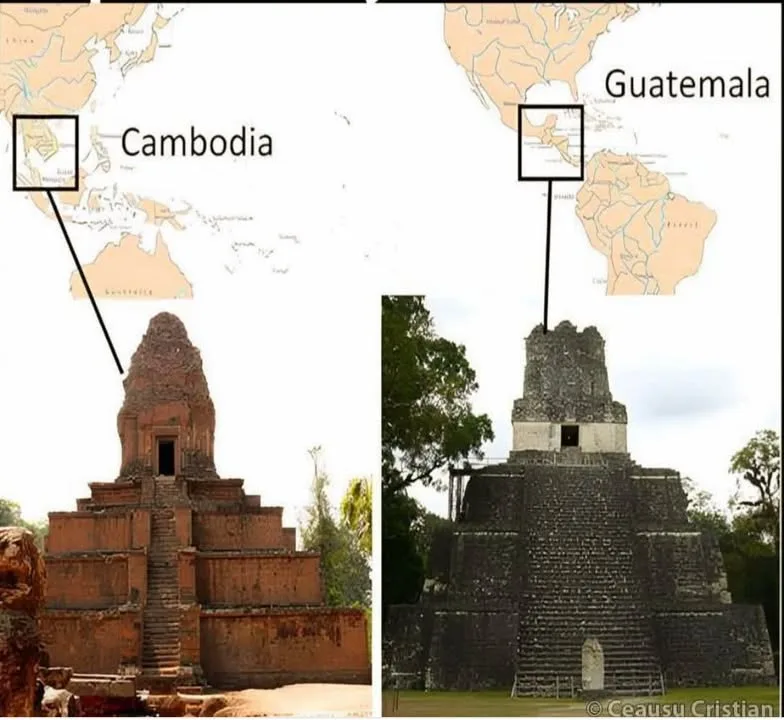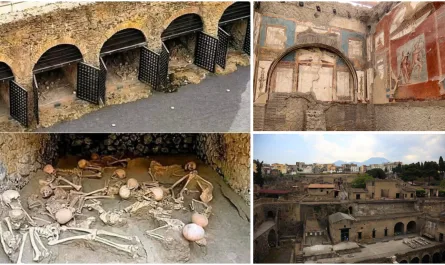Ever looked at ancient architecture and felt a shiver of wonder? Imagine a temple rising majestically, its stepped levels reaching for the sky, crowned by a sacred chamber. Now imagine two such structures, thousands of miles apart, built by entirely different civilizations, yet sharing an uncanny resemblance. This isn’t a plot from an adventure movie; it’s a real-world archaeological puzzle that continues to fascinate.
Take a look at these two incredible examples:

On the left, we have a magnificent temple from Cambodia, a testament to the grandeur of the ancient Khmer Empire. Its reddish-brown stones tell tales of a powerful civilization that flourished in Southeast Asia.
On the right, we see a towering pyramid from Guatemala, showcasing the extraordinary ingenuity of the ancient Maya civilization in Central America. Its grey stone steps lead to a temple at its summit, a place of profound spiritual significance.
10,000 miles separate these two architectural marvels. One built in the heart of Southeast Asia, the other deep within the Americas. The immediate question that springs to mind for many is: How? Were there ancient voyagers crossing vast oceans, sharing building secrets? Did a long-lost super-continent once connect them?
While the idea of forgotten connections is certainly romantic, mainstream archaeology offers a more grounded, yet equally compelling, explanation: convergent architectural evolution.
Think of it this way: Just as different species can evolve similar traits to adapt to similar environments (like wings on birds and bats), human civilizations, faced with similar needs and constraints, can independently develop similar solutions.
Here’s why these distant temples might look so alike:
- Religious and Ceremonial Purpose: Both the Khmer and Maya civilizations placed immense importance on their deities and elaborate ceremonies. Stepped pyramidal structures provided an ideal platform for rituals, offerings, and for their temples to symbolically reach towards the heavens.
- Practicality and Stability: Building tall, enduring structures with available materials (stone, in both cases) naturally leads to certain architectural principles. A stepped design offers inherent stability, distributing weight and allowing for easier construction without advanced tools like cranes.
- Visibility and Symbolism: A high, prominent structure makes a powerful statement. It’s visible from afar, asserting the power and spiritual devotion of the builders. The ascent to the summit can also symbolize a spiritual journey or a connection to the divine.
- Available Materials and Techniques: While the specific types of stone and construction techniques varied, both cultures worked with the resources at hand to create monumental structures that would stand the test of time.
So, rather than direct contact or a lost global super-culture, these remarkable parallels likely suggest universal principles in human ingenuity. Faced with similar challenges and aspirations, our ancestors, across continents, arrived at surprisingly similar architectural solutions.
These temples stand today not just as a testament to the engineering prowess of the Khmer and Maya peoples, but also as a powerful reminder of the shared human experience – our drive to connect with the spiritual, to build grand monuments, and to leave an enduring legacy.
Whether a fascinating coincidence or an echo of shared human architectural intuition, these structures continue to inspire awe and spark our imagination about the incredible achievements of ancient civilizations.





